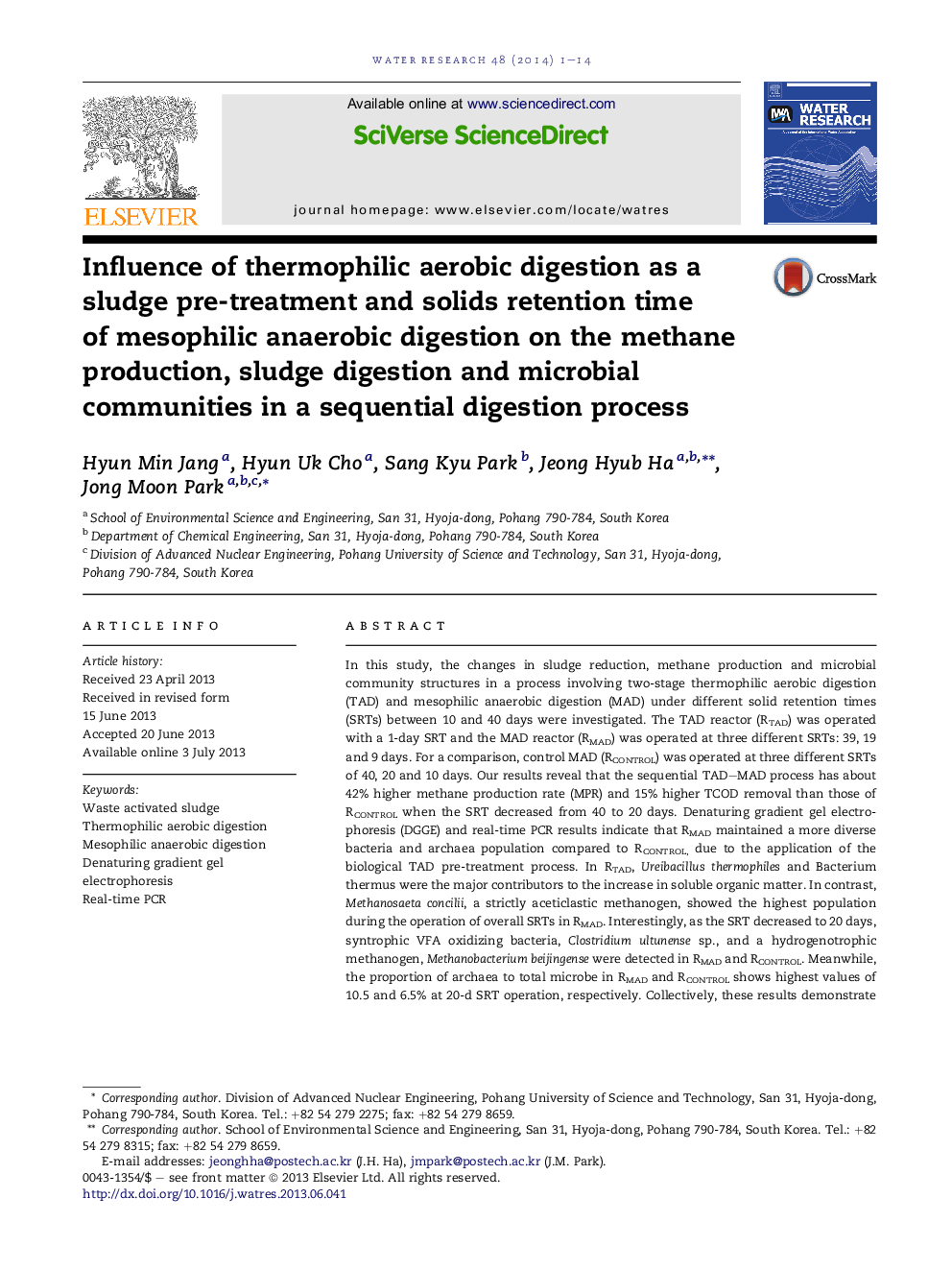| کد مقاله | کد نشریه | سال انتشار | مقاله انگلیسی | نسخه تمام متن |
|---|---|---|---|---|
| 6367136 | 1623120 | 2014 | 14 صفحه PDF | دانلود رایگان |
- A TAD-MAD process was investigated for sludge reduction and methane production.
- Biological TAD pre-treatment improved the hydrolysis of rate limiting step.
- Microbial species using DGGE and a real-time PCR were examined at different SRTs.
- Hydrogenotrophic methanogen species were highly affected by the changes of SRTs.
- PCR-based molecular approaches provided a finer understanding of a TAD-MAD process.
In this study, the changes in sludge reduction, methane production and microbial community structures in a process involving two-stage thermophilic aerobic digestion (TAD) and mesophilic anaerobic digestion (MAD) under different solid retention times (SRTs) between 10 and 40 days were investigated. The TAD reactor (RTAD) was operated with a 1-day SRT and the MAD reactor (RMAD) was operated at three different SRTs: 39, 19 and 9 days. For a comparison, control MAD (RCONTROL) was operated at three different SRTs of 40, 20 and 10 days. Our results reveal that the sequential TAD-MAD process has about 42% higher methane production rate (MPR) and 15% higher TCOD removal than those of RCONTROL when the SRT decreased from 40 to 20 days. Denaturing gradient gel electrophoresis (DGGE) and real-time PCR results indicate that RMAD maintained a more diverse bacteria and archaea population compared to RCONTROL, due to the application of the biological TAD pre-treatment process. In RTAD, Ureibacillus thermophiles and Bacterium thermus were the major contributors to the increase in soluble organic matter. In contrast, Methanosaeta concilii, a strictly aceticlastic methanogen, showed the highest population during the operation of overall SRTs in RMAD. Interestingly, as the SRT decreased to 20 days, syntrophic VFA oxidizing bacteria, Clostridium ultunense sp., and a hydrogenotrophic methanogen, Methanobacterium beijingense were detected in RMAD and RCONTROL. Meanwhile, the proportion of archaea to total microbe in RMAD and RCONTROL shows highest values of 10.5Â and 6.5% at 20-d SRT operation, respectively. Collectively, these results demonstrate that the increased COD removal and methane production at different SRTs in RMAD might be attributed to the increased synergism among microbial species by improving the hydrolysis of the rate limiting step in sludge with the help of the biological TAD pre-treatment.
156
Journal: Water Research - Volume 48, 1 January 2014, Pages 1-14
